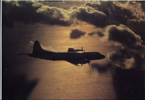ChezDaJez
Posts: 3436
Joined: 11/12/2004
From: Chehalis, WA
Status: offline

|
quote:
If Ki-44 was rated poorly in stock or CHS - they were wrong. Look it up. It is so clearly
better than German fighters they lost out after winning licence production deals: both
Me-109E and He-100 were licenced for Japanese production IRL - buit the decision to go with
Ki-44 is lauded by Francillon. The A6M2 is winning well in many tests - so it is hardly worthless -
and the Ki-44 cannot replace it as a long range fighter - ever. Anyway - I don't care if a plane
is better or worse - I am not a partisan. I do not "defend" a plane. It is what it is. Go argue
with Francillon. I won't play CHS or stock because they got the specs wrong on most of hte planes
-- and they are there for all to see and check. A professional programmer and mathmetician
verified my data - and it stands on its own merits - complete with citiations. One person objected
to my "changing the long range Pete" - but Pete was not long range - however passionately someone
may believe otherwise. I found horrible errors, sometimes overstatements of speed or ROC or
service ceiling by more than 100%. Ki-44 is great because of its ROC - its speed - and its
reasonable punch. It is weak in range - well you cannot have everything. Yes - I expect to see it as
a player preferred plane - because it should be - not because it is somehow wrong.
The Ki-44 was a good, not great, interceptor. It was a fair dogfighter. But it was not designed to dogfight, it was designed to intercept bombers. To say that has virtually the same performance abilities as a Corsair is ludicrous. Any military aircraft buff can tell you that. I am keenly interested in WWII aircraft, especially Japanese fighters of the 1942 period. I believe I know what I am talking about. I do not believe that you are as knowledgable when it comes to WWII aircraft. Your claim that maximum speed and ROC are the major determinants of maneuverability in the game can not be verified even when using the formula you say is applicable.
Aircraft in combat needed to maneuver to hit and avoid being hit. They used both the vertical and horizontal planes to do so. Your assumption totally ignores performance in the horizontal plane and unduly rewards those that use the vertical. Vertical performance is certainly more important than the horizontal but the ratio of importance is probably something on the order of 55/45 or 60/40, not 100/0.
Aircraft seldom achieved maximum horizontal speed in a fight unless they could dive. A typical WWII aircraft required a long time to accelerate to its maximum speed and sufficient time was seldom available in combat. Given that the greatest rate of acceleration occurs at low speed and drops off as speed is gained should tell you something. A P-40 needs more than 55 seconds to accelerate from 150mph to 250 mph. My guess is that it will take far more than a minute to accelerate from 250mph to 350mph and that's an awfully long time with a Zero on your tail! So how again is maximum speed a major factor in combat?
Sustained rate of climb? Just like with maximum speed, it gets you to where the enemy is quicker but it does nothing for you once you are there. Rolling, turning ability, zooming and diving are the major factors in combat. Most fighter pilot will tell you that it is virtually impossible to maintain high speeds when yanking and banking in combat. Air combat between fighters typically became slower and lower as it progressed.
The game actually does a fair job of presenting the relative merits of one aircraft versus another. Granted some of their hard data is suspect such as maximum speeds and we know that a single numerical value for maneuverability will never be representaitve of all flight regimes, but their relative performance to one another as listed in the game is within the realm of reality. Maneuverability should be an abject rating that reflects the ability to change direction. If WitP does not use it in this way (and I think it does to a certain extent), then why make the same mistake?
You state that the goal is to reduce air combat losses. There are many ways to do so such as increasing durability ratings. If you believe than the maneuver rating is responsible for excessive combat losses, why not use a multiplier and apply it to the stock ratings. Try a value of 0.5 or 0.75 multiplied by the stock rating.
Let me blunt here. The formula that you propose to use for RHS is flat out wrong! It has more holes in it than the USS Arizona. Any formula that refuses to recognize the importance of roll and turn rates will never reflect reality when it comes to maneuverability.
My goal here is not to offend or to piss you off. That does no good. My goal here is to offer constructive criticism, heavy handed though it might be. I will refrain from any more posts on this discussion unless invited.
Chez
< Message edited by ChezDaJez -- 8/7/2006 2:54:32 AM >
_____________________________
Ret Navy AWCS (1972-1998)
VP-5, Jacksonville, Fl 1973-78
ASW Ops Center, Rota, Spain 1978-81
VP-40, Mt View, Ca 1981-87
Patrol Wing 10, Mt View, CA 1987-90
ASW Ops Center, Adak, Ak 1990-92
NRD Seattle 1992-96
VP-46, Whidbey Isl, Wa 1996-98
|
 Printable Version
Printable Version








 New Messages
New Messages No New Messages
No New Messages Hot Topic w/ New Messages
Hot Topic w/ New Messages Hot Topic w/o New Messages
Hot Topic w/o New Messages Locked w/ New Messages
Locked w/ New Messages Locked w/o New Messages
Locked w/o New Messages Post New Thread
Post New Thread